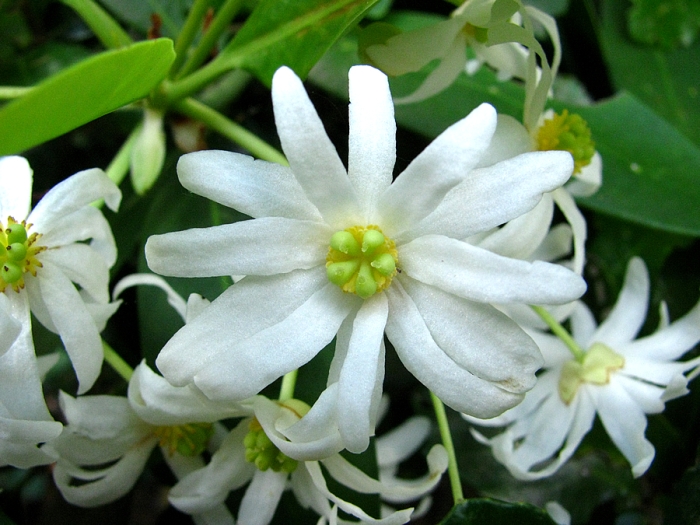Winter’s Bark
(Drimys winteri)
Winter’s Bark (Drimys winteri)
/
/

Inao
CC BY-SA 2.0
Image By:
Inao
Recorded By:
Copyright:
CC BY-SA 2.0
Copyright Notice:
Photo by: Inao | License Type: CC BY-SA 2.0 | License URL: https://creativecommons.org/licenses/by-sa/2.0/ | Uploader: inao ~ | Publisher: Flickr |




























































Estimated Native Range
Summary
Drimys winteri, commonly known as Winter’s Bark, is an evergreen tree, often inaccurately described as a shrub, native to the temperate rainforests of Southern Chile and Argentina. It can grow up to 20 meters (66 feet) tall with a slender form. The leaves are lanceolate, glossy green on the upper surface, and whitish below, reaching up to 20 cm (8 inches) in length. The white flowers, with a yellow center, are composed of numerous petals and stamens, blooming in spring and are highly aromatic, resembling the scent of jasmine. The fruit is a bluish berry, though not commonly noted for ornamental value.
Winter’s Bark is valued for its striking red-brown bark, bright green fragrant leaves, and clusters of creamy white flowers that are quite showy in the landscape. It is suitable for cool, moist climates and is used as an ornamental plant in gardens and parks. It thrives in partial shade to full sun, requires medium amounts of water, and prefers well-drained, acidic to neutral soils. While it is not known for particular diseases, it can suffer from root rot in poorly drained soils. It is not typically invasive but should be monitored as it can spread if conditions are ideal.CC BY-SA 4.0
Winter’s Bark is valued for its striking red-brown bark, bright green fragrant leaves, and clusters of creamy white flowers that are quite showy in the landscape. It is suitable for cool, moist climates and is used as an ornamental plant in gardens and parks. It thrives in partial shade to full sun, requires medium amounts of water, and prefers well-drained, acidic to neutral soils. While it is not known for particular diseases, it can suffer from root rot in poorly drained soils. It is not typically invasive but should be monitored as it can spread if conditions are ideal.CC BY-SA 4.0
Plant Description
- Plant Type: Shrub
- Height: 15-24 feet
- Width: 15-20 feet
- Growth Rate: Moderate
- Flower Color: Cream, White
- Flowering Season: Winter
- Leaf Retention: Evergreen
Growth Requirements
- Sun: Full Sun
- Water: Medium
- Drainage: Slow, Medium
Common Uses
Fragrant, Hedges, Low Maintenance, Salt Tolerant, Showy Flowers
Natural Habitat
Temperate rainforests of Southern Chile and Argentina
Other Names
Common Names: Canelo, Pepparbarksträd, Winter’s-Bark,
Scientific Names: , Drimys winteri, Drimys winteri var. chilensis, Wintera aromatica, Drimys granadensis var. mexicana, Drimys winteri var. winteri, Drimys chilensis, Drimys brasiliensis var. retorta, Drimys mexicana, Drimys winteri f. chilensis
GBIF Accepted Name: Drimys winteri J.R.Forst.